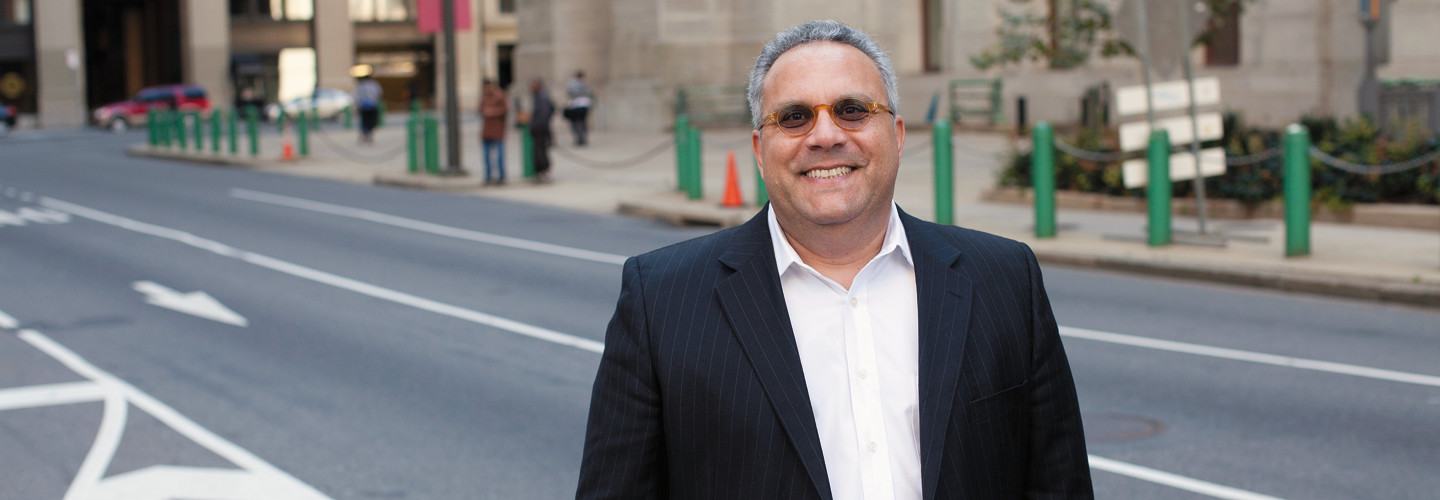Philadelphia Promotes Innovation
In 2011, Adel Ebeid became Philadelphia’s first chief innovation officer. In addition to managing daily IT operations for the fifth-most-populous city in the country, he leads the IT innovation strategy to advance the city’s digital quality of life. Ebeid came to the post from across the Delaware River, where he served as the New Jersey state CIO for five years.
He spoke with StateTech Managing Editor Amy Schurr about how he has transformed service delivery and championed innovation in Philly.
StateTech: How is local government IT different from the state level?
Ebeid: At the state level, it’s a different ballgame. The technology portfolio is different, the projects are larger and you’re several layers removed from citizens. When you’re that far removed, you’re not really thinking about civic innovation or public engagement. As a CIO for a city, you’re much closer to the customers who are consuming your service and benefiting from IT solutions. You get immediate feedback, good, bad or indifferent.
StateTech: What major IT projects has the city embarked on?
Ebeid: We wanted to make sure that the trains can run on time, so we focused on securing and stabilizing the city’s infrastructure. We consolidated city email down to a single system so we can improve communications while lowering our costs. And we handpicked several major systems that were quite old and unstable, and underwent a modernization effort to either replace, upgrade or replatform them.
After we gained credibility with those things, we focused on public-facing innovation. That led to an open-data program, where we expose data to the public and the local tech community. We’ve become adept at developing public-facing mobile apps for 311 and one for the myPhillyRising neighborhood program.
StateTech: How does the Innovation Academy work?
Ebeid: We picked 19 people throughout the city government who are most likely to take risks and think outside of the box. Through the program, they become innovation ambassadors and get to practice what they learned. We want them to stay in their department and spread some good vibes throughout the agency.
And we have the innovation lab, which is a co-working space between startups, government, nonprofits and the private sector for creative problem-solving and collaboration.
StateTech: How does the city support a mobile workforce?
Ebeid: We’ve developed some internal apps and adopted the DocuSign platform for electronic signatures. We’ve contracted with AirWatch for mobile device management. Through our CityNext partnership, Microsoft was able to help us pilot several ideas on improving workflow in the field.
StateTech: What about public-facing apps?
Ebeid: We have an entire group headed by our director of civic technology, and he constantly thinks about how we can expose data through either a widget on an existing app or a brand-new app. Being a melting-pot city, the mobile apps that we develop are sometimes in 16 or 17 languages.
StateTech: How has Philadelphia embraced cloud computing?
Ebeid: Our default mode of thinking is that when we want to do anything, we ask first if there’s a cloud offering that’s available. If the answer is yes, we pursue that aggressively. If the answer is no, then how can we pursue a hosted solution to manage the service? The more we put in the cloud, the more I can repurpose my resources for the innovation side.
Today, about 30 percent of our footprint is in the cloud. I can only think of one system that has gone in-house; everything else is either software as a service, platform as a service or infrastructure as a service, or has managed services around it.
StateTech: What is one of the most useful applications resulting from Philadelphia’s open-data initiative?
Ebeid: About a year ago, we released six years’ worth of crime data. The minute we released it, the creative apps that came out were unbelievable — very visual. Folks who knew how to develop using geographic information systems were immediately slicing and dicing the data, where you can draw a line around a particular neighborhood or block and begin to understand all the different types of crime that occur.
StateTech: How does open data spur economic development?
Ebeid: Philadelphia is an innovation-friendly city, and startups and entrepreneurs always gravitate toward cities that have a vibrant ecosystem built around open data. Entrepreneurs need access to data to test out their plan, services, products and solutions. We often refer to open data as the secret sauce that helps the matchmaking process between government, citizens and the local tech community. When done well, open data can also lead to open government and open services.
StateTech: What is the city doing to develop civic technology?
Ebeid: We established a group that’s focused on community engagement, mobile apps, coordinating hackathons and making sure that all the public-facing innovation is consistent with our vision of innovating with intent. We want to solve problems and help Philadelphians, not necessarily just developing mobile apps so we can say we’ve got them. All of our mobile apps are in response to a real pain point from the local community.
StateTech: How does IT make Philadelphia a better place to live?
Ebeid: You’d have to go to what defines a smart city — a smart city is one that is resilient, sustainable, and has figured out a way to optimize its resources and how to use tech to improve the digital quality of life for citizens. You can feel the energy and feel that the city is doing something different. It may not be visible to you right away, but we are behind the scenes doing everything possible to make sure that we have a citizenry that is in touch with its government.
StateTech: What made you take your job?
Ebeid: Mayor Nutter is one of the reasons I moved here from New Jersey. Frankly, I just saw a level of passion that I didn’t see in a lot of people. I saw somebody who cares, somebody who had a vision, somebody who talks about what Philadelphia is going to look like in 2020 and in 2035 and can engage at that strategic level, but also has the attention span to focus on what needs to be done day to day. He surrounded himself with a set of franchise administration employees, and I am honored to be part of that team.
StateTech: What type of desktop environment did you encounter?
Ebeid: As you can imagine, government tends to hold on to the PCs for a very long time. It wouldn’t surprise me if you find PCs that are over five years old. We have been steadily replacing them with notebooks, and notebooks with tablets, so that we can enable a more mobile workforce in the next two to three years.
If I had all the money in the world, then I would replace all 24,000 PCs in one shot, but at this point, we replace anywhere between 1,500 to 2,000 a year.
We have some XP systems, obviously, but we’re taking a different approach. We’re trying to virtualize those applications so that we can inoculate them.
StateTech: How do you balance the dual job of running IT operations at the same time that you champion innovation?
Ebeid: It changes from year to year. I thought I would hit the ground running on innovation right away, and but it was clear to me that there were some foundational things that needed to be taken care of — otherwise, you weren’t going to earn the right to focus on innovation. So in the first year, we built the new management team, brought in new talent, put together a plan of where our infrastructure and our systems were and got funding to tackle those issues.
The second year, I hit the road hard telling the Philadelphia story. During that time, we built the open-data program, the civic technology and the innovation academy, and the lab was in a blueprint stage.
In 2014, a lot of those things are behind us now, and we’re already talking about how we take these things to the next level.
StateTech: What’s next for open data?
Ebeid: In six months or so, we’re probably going to see the next major shift in open data. Just like Web 2.0, I think open data is going to go to 2.0. The average citizen on the street also needs to understand data, so we need to figure out how we expose data not just in a raw format for the local tech community, but also in a format that the average person can understand.
GIS is going to become extremely popular because it has the potential of being that visual platform between us and citizens. A citizen is not going to read a 400-page budget handbook or download a 600-page spreadsheet, but there’s a way to help citizens visualize a city’s budget through a series of graphics.
The lines are getting blurry between open data, GIS and civic technology. And I think those three are going to intersect and what’s going to come out is really open-data 2.0.








